Роздатковий матеріал "Punctuation".
Punctuation helps to organize your writing and makes your work easier to read and understand.
Англійська мова
Використання інноваційних форм, методів, засобів навчання в загальній середній школі.
Пунктуація в англійській мові.


|
|
Punctuation

Punctuation helps to organize your writing and makes your work easier to read and understand.
Contents
|
Section One….. |
Full stop…………….………………5 |
|
Section Two….. |
Capital letters….…………………..6 |
|
Section Three... |
Commas……………………………7 |
|
Section Four…. |
Question and exclamation marks..8 |
|
Section Five….. |
Semi-colons…………….………….9 |
|
Section Six…… |
Colons……………………………..10 |
|
Section Seven.. |
Brackets…………………………….11 |
|
Section Eight… |
Dashes……………………………..12 |
|
Section Nine…. |
Apostrophes………………………13 |
|
Section Ten….. |
Speech marks…………………....14 |
|
Tasks…………. |
……………………………………..15 |
|
Answers………. |
…………………….……………….18 |

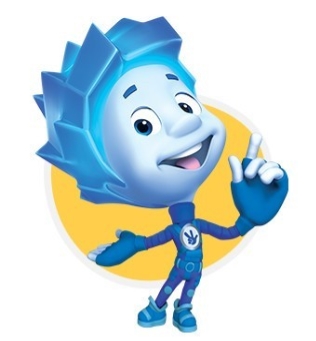 Full stop
Full stop

You usually need to write in sentences. Each sentence must start with a capital letterand end with a full stop.
e.g. Last week a funfair came to the town park.
e.g. The funfair had a big wheel and a helter-skelter.
See Q1
(page16)
 Capital letter
Capital letter

Apart from the beginning of a sentence, use capital letters to start the names of people and pets, places, days of the week, months of the year and titles.
e.g.Last Wednesday, Danny took his dog, Jake, for a walk to Highfield Park.
e.g. The capital of Spain is Madrid.
See Q2
(page16)
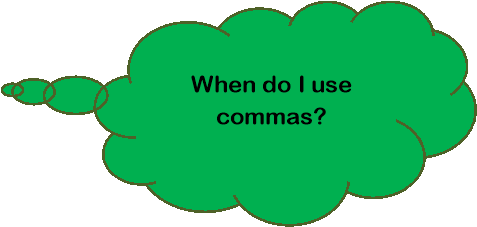 Commas
Commas
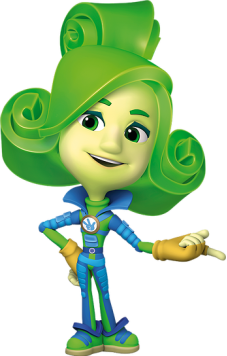 Commas help to divide longer sentences into smaller sections, which make them easier to read, or to separate items in a list.
Commas help to divide longer sentences into smaller sections, which make them easier to read, or to separate items in a list.
e.g. The waves, which were coming closer, would soon break down the sand castle.
e.g. We used egg, tomatoes, lettuce and cucumber in our sandwiches.
See Q3
(page16)
Question marks and exclamation marks

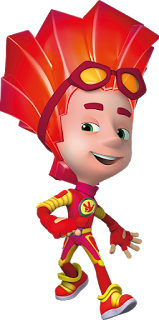 Sentences which are questions must always end with a question mark.
Sentences which are questions must always end with a question mark.
e.g. Would she ever have another birthday as good as this one?
You can use exclamation marks after a noisy word, to show excitement or when someone shouts. When you use either of these marks you don’t need to put the full stop as well.
e.g.The trip to France was too amazing for words!
See Q4
(page16)

 Semi-colons
Semi-colons
Semi-colons(;) can be used like commas, to separate items in a list, or to give a longer pause in a middle of a sentence.
e.g. It was a hot day; a really hot day.
You don’t need to use a comma or semi-colon before the last item in a list.
e.g. In the bin were: old cardboard boxes; scrunched up paper; last night’s dinner and an empty carton.
See Q5
(page16)
 Colons
Colons

Colons (:)can be used to introduce lists, like this:
e.g. In his pocket, the teacher found: one piece of chewing gum, two marbles and a cracked, plastic pen.
Colons can also be used to join two sentences together, when those sentences are very closely linked.
e.g. What incredible luck: all six of his lottery numbers had come up!
See Q6
(Page 17)
Brackets
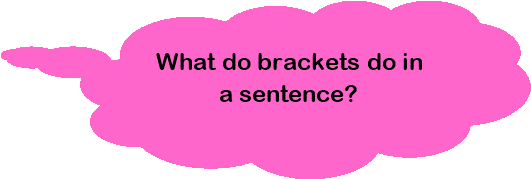
Brackets ()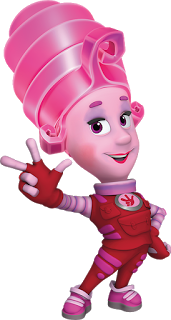 add extra information to a sentence. The sentence should still make sense if the words in the brackets are taken out of the sentence.
add extra information to a sentence. The sentence should still make sense if the words in the brackets are taken out of the sentence.
e.g. Mrs Aston from next door (who is eighty) has a large, black cat.
e.g. The black cat (called Henry) is always hungry.
See Q7
(Page 17)
 Dashes
Dashes
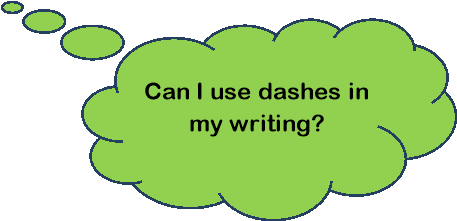
Dashes (-) also indicate a pause and can be used to create suspense in a sentence or to add an extra piece of information.
e.g. He was quite alone – or was he?
e.g. It was a beautiful, sunny morning – not a cloud in the sky.
See Q8
(Page 18)
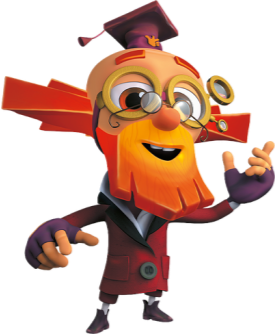 Apostrophes
Apostrophes

The possessive form of singular nouns is made by putting an apostrophe s (‘s)after the noun that stands for the possessors.
e.g. It is a Tom’s cat.
If the plural ends in s we just add an apostrophe.
e.g. My mom buy apples’.
If the plural doesn’t end in s we add ‘s.
e.g. Men’s work.
See Q9
(Page 18)
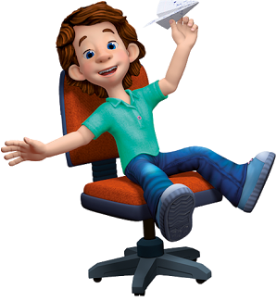 Speech marks
Speech marks

Speech marksare used to show the words that people say. This is called direct speech. Use speech marks when you write interviews or stories; they go at the beginning and end of the actual words that are spoke.
e.g. “Nikki, close the door, please”, said Mrs Ross.
See Q10
(Page 18)
Tasks
Q1 Add the correct punctuation to these sentences.
- tomorrow is the last day of school
- he enjoyed his holiday but it was good to see his friends again
Q2 Write down two times when you would need to use a capital letter.
1)_______________________________________________
2)_______________________________________________
Q3 Use commas to punctuate these sentences.
- Sam was very excited and was running jumping and dancing round the garden.
- Scott the boy who lives next door has two dogs.
Q4 a) After which of the following words would you see an exclamation mark? (Circle the word.)
Hey Elephent Stop Chocolate
b)What is missing from this sentence
_____________________________________________
Q5 Add the missing semi-colons to these sentence.
- We think the dog belongs to Mr Brown but nobody knows for sure.
- Jon had no choice he had to run or be late for school.
Q6 Put the colon in the correct place in the following sentences.
- I have news for you you have won a competition.
- She was very excited it was her birthday and she was going on holiday!
Now punctuate each list using a colon to introduce it and commas or semi-colons to separate the items.
- In the girl’s locker the teacher found three elastic bands one hair bobble sixteen pence and a sweet.
- When Bilal looked in the dog’s basket he saw one chewed slipper a blanket and one half-eaten bone.
Q7 Here are some words in brackets. Choose the one you think fits best and rewrite the sentences, adding the brackets where you think they belong.
(who looks like me)
(but felt like a jelly inside)
(such as the Venus Flytrap)
- He pretended to be strong.___________________________________________
- The girl in the photo is my sister.
___________________________________________
- Carnivorous plants trap insects!
___________________________________________
Q8 Rewrite the following sentences using dashes.
- Adam was really frightened and only he knew why.
_______________________________________________
_______________________________________________
- Leanne hadn’t told anyone not even her family.
______________________________________________
_______________________________________________
Q9 Write out these phrases again using apostrophes to show who each thing belong to.
- the bike of Jimmy ________________________
- the cyberdog of Sarah_____________________
- the stickers of Tara_______________________
- the cake of Daniel_________________________
- the tree of Ashley_________________________
Q10 Add speech marks to the following sentences.
- Who can tell me the capital of Norway? asked the teacher.
- Take me to your leader! demanded the alien.
\
Answers
Q1 a) Tomorrow is the last day of school.
b) He enjoyed his holiday but it was good to see his friend again.
Q2 Any three answers from: to start a sentence; for the names of people or pets, places, days of the week, months of the year; titles.
Q3 a) Sam was very excited and was running, jumping and dancing round the garden.
b) Scott, the boy who lives next door, has two dogs.
Q4 a) Hey! Stop!
b) A question mark is missing from the sentence (?).
Q5 a) We think the dog belongs to Mr Brown; but nobody knows for sure.
b) Jon had no choice; he had to run or be late for school.
Q6 a) I have news for you: you have won a competition.
b) She was very excited: it was her birthday and she was going on holiday.
c) In the girl’s locker the teacher found: three elastic bands, one hair bobble, sixteenpence and a sweet. (You could use semi-colons instead of commas)
d) When Bilal looked in the dog’s basket he saw: one chewed slipper, a blanket and one half-eaten bone. (You could use semi-colons instead of commas)
Q7 a) He pretended to be strong (but left like a jelly inside).
b) The girl in the photo (who looks like me) is my sister.
c) Carnivorous plants (such as the Venus Flytrap) trap insects!
Q8 a) Adam was really frightened – and only he knew why.
b) Leanne hadn’t told anyone – not even her family.
Q9 a) Jimmy’s bike;
b) Sarah’s cyberdog;
c) Tara’s stickers;
d) Daniel’s cake;
e) Ashley’s tree.
Q10 a) “Who can tell me the capital of Norway?” asked the teacher.
b) “Take me to your leader!” demanded the alien.
See you soon!
![]()


про публікацію авторської розробки
Додати розробку

